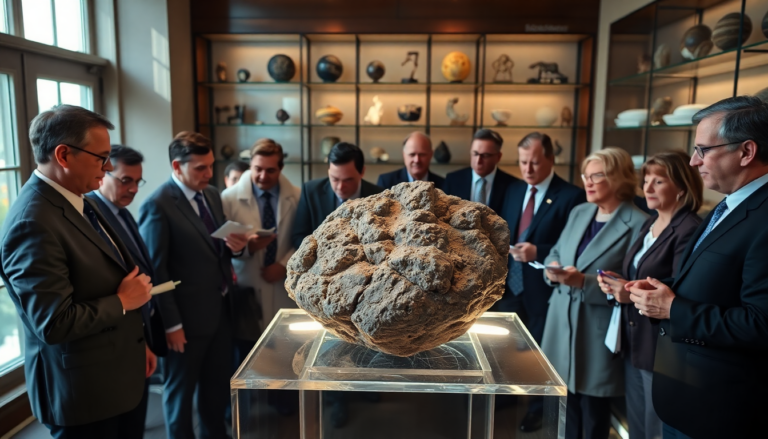Argomenti trattati
The recent auction of the Martian meteorite NWA 16788 has sparked excitement among collectors and scientists alike, fetching an astounding $5.3 million. This incredible price not only highlights the rarity of this celestial specimen, but also points to a growing interest in extraterrestrial materials. As we explore the details of this remarkable sale, it’s fascinating to see how the allure of space impacts market dynamics in such a significant way.
The Auction and Its Historic Outcome
The Sotheby’s auction kicked off with an opening bid of $2 million for NWA 16788, which stands as the largest known piece of Mars ever found on Earth. Initially, expectations hovered between $2 million and $4 million. However, what followed was a gripping 15-minute bidding war that escalated the final price to a staggering $4.3 million, which soared to $5.3 million once auction fees were included. This extraordinary sale cements NWA 16788’s status as the most expensive meteorite ever auctioned, marking a pivotal moment where science meets commerce.
Weighing in at approximately 25 kilograms (55 pounds), NWA 16788 is not only the largest Martian meteorite; it also constitutes about 7 percent of the total known mass of Martian material on Earth. Discovered by a meteorite collector in the Sahara Desert in November 2023, this specimen displays minimal weathering, indicating a relatively recent impact. Classified as an olivine microgabbro shergottite, its characteristics elevate both its scientific and monetary value.
The Scientific Significance of NWA 16788
So, why does NWA 16788 hold such appeal? Its rarity and size play a crucial role. With only around 400 out of more than 77,000 registered meteorites originating from Mars, this specimen offers invaluable insights into Martian geology and history. Remarkably, around 20 percent of the meteorite is made up of maskelynite, a glassy substance formed under the intense heat of asteroid impacts on Mars. Such findings are essential to enhancing our understanding of the planet’s geological processes.
Before the auction, thousands of visitors had the chance to view NWA 16788, revealing a growing public fascination with extraterrestrial objects. Interestingly, this auction coincided with another historic sale, where a Ceratosaurus dinosaur skeleton sold for $30.5 million, underscoring the expanding market for unique natural artifacts.
The Growing Market for Rare Artifacts
The staggering prices achieved at auctions like Sotheby’s reflect a deep-rooted fascination with the natural world, spanning from the mysteries of outer space to the ancient history of our planet. Cassandra Hatton from Sotheby’s noted the enduring curiosity that drives collectors, emphasizing that their interest transcends mere scientific passion; it embodies a profound desire to understand the forces that have shaped our universe.
As we witness the meteoric rise in value for meteorites and fossils, it’s clear that a booming market is on the horizon, where rare pieces can fetch millions. For many enthusiasts, owning such extraordinary items may seem like a distant dream, highlighting the divide between serious collectors and casual admirers. This auction serves as a powerful reminder of the immense value of extraterrestrial materials and how dedicated collectors are willing to invest substantial sums to call a piece of the cosmos their own.

